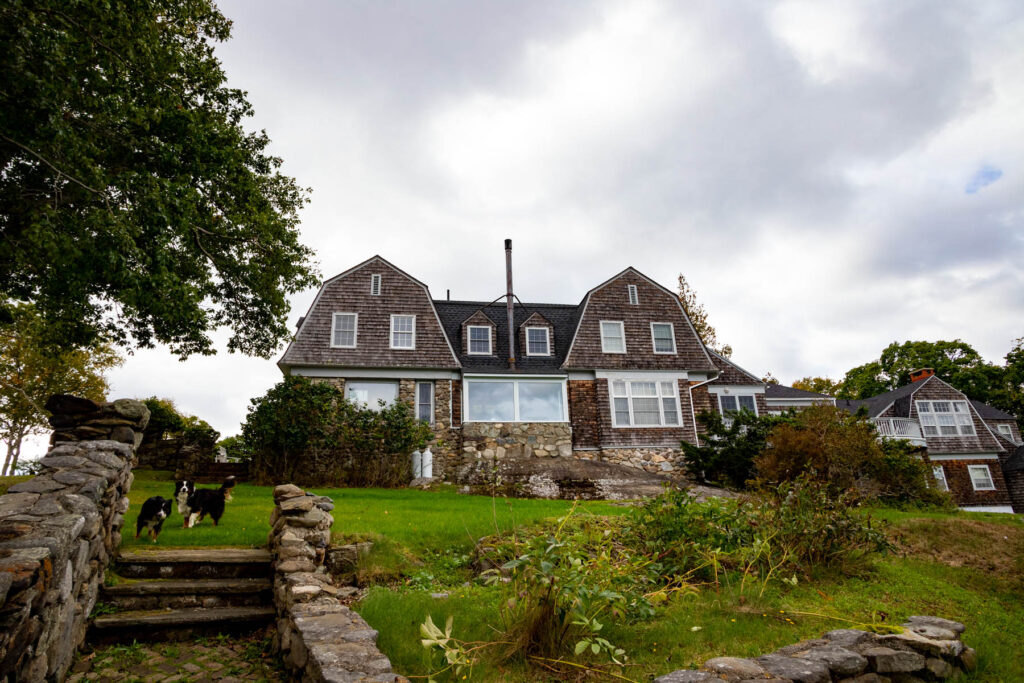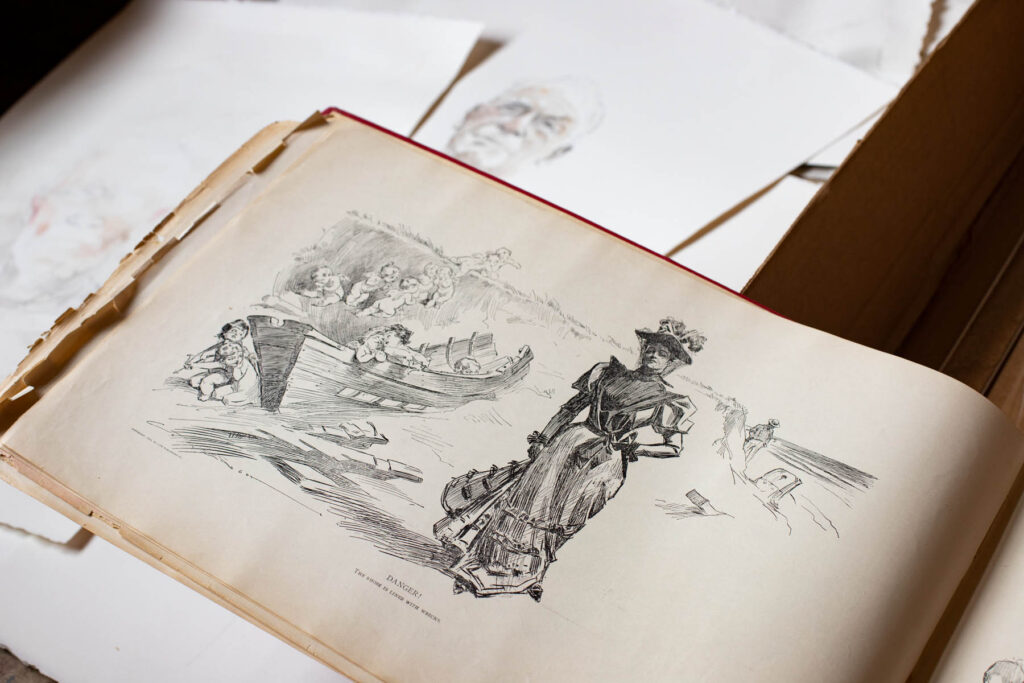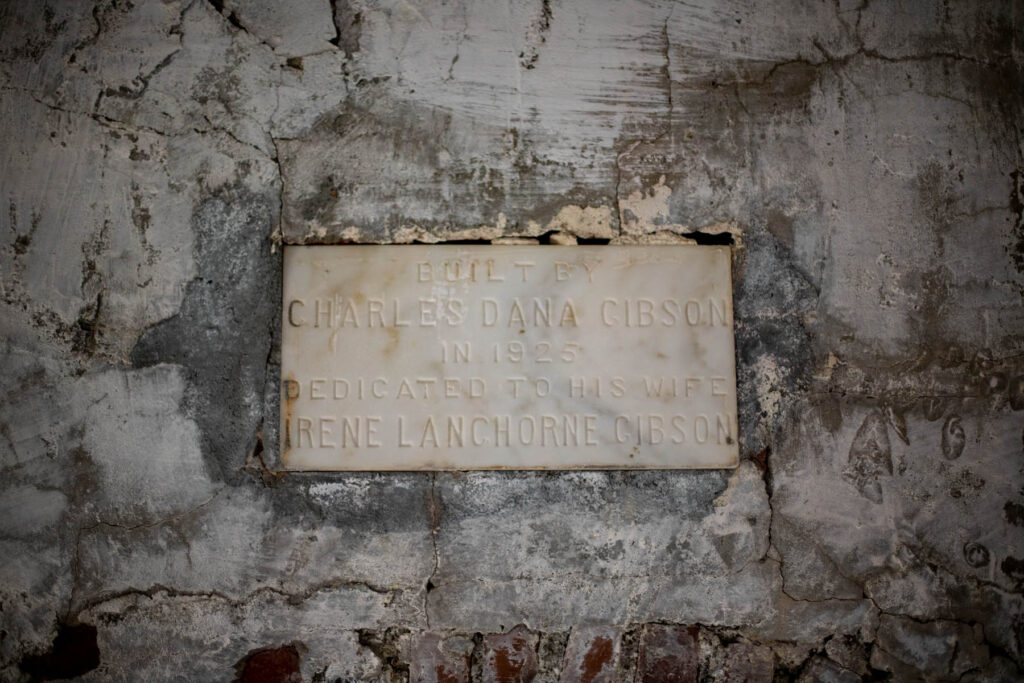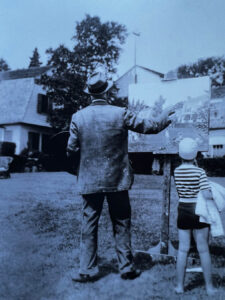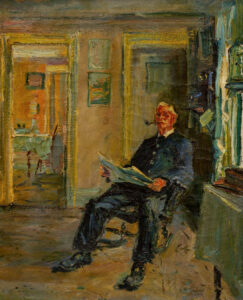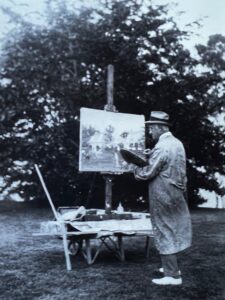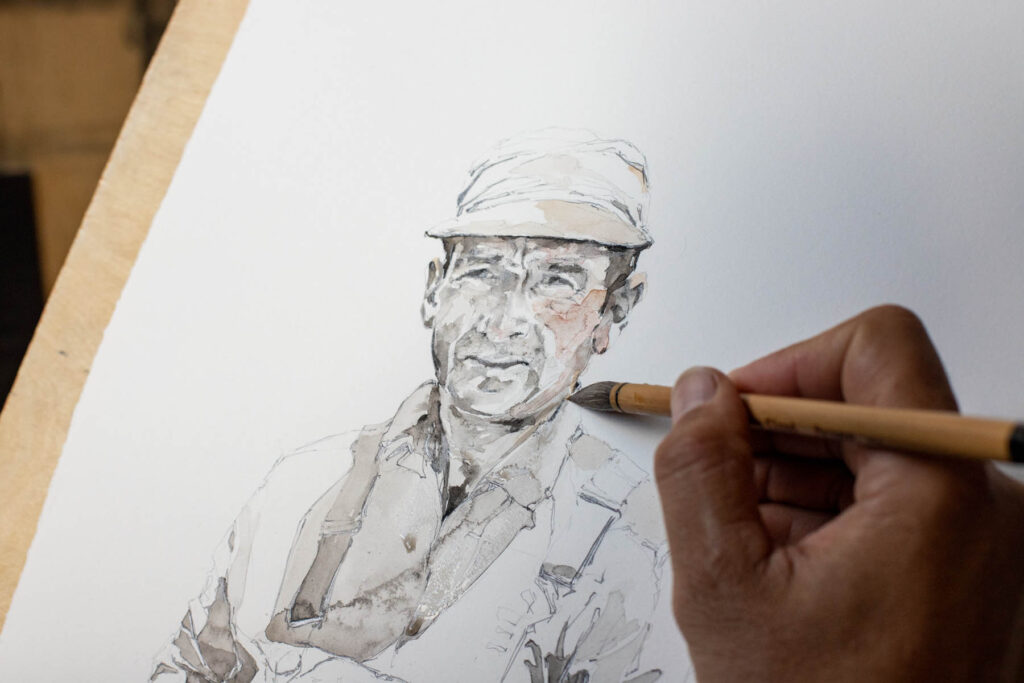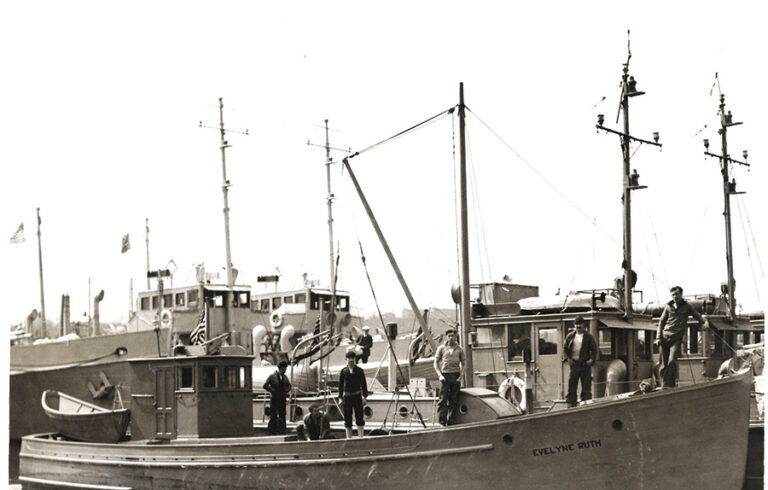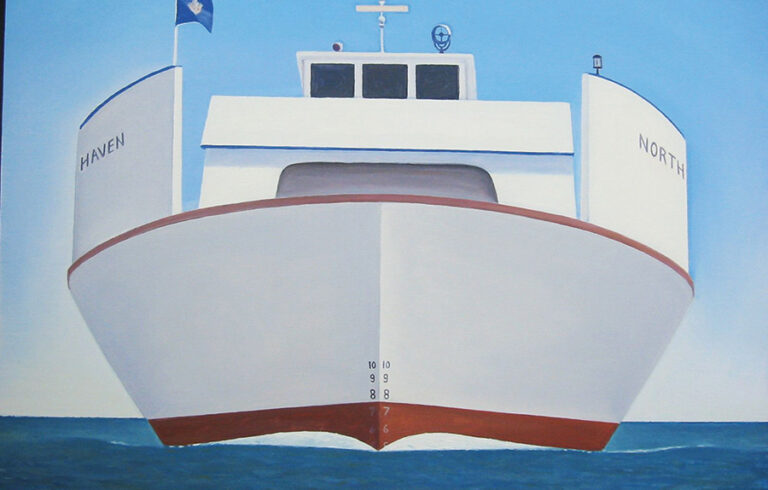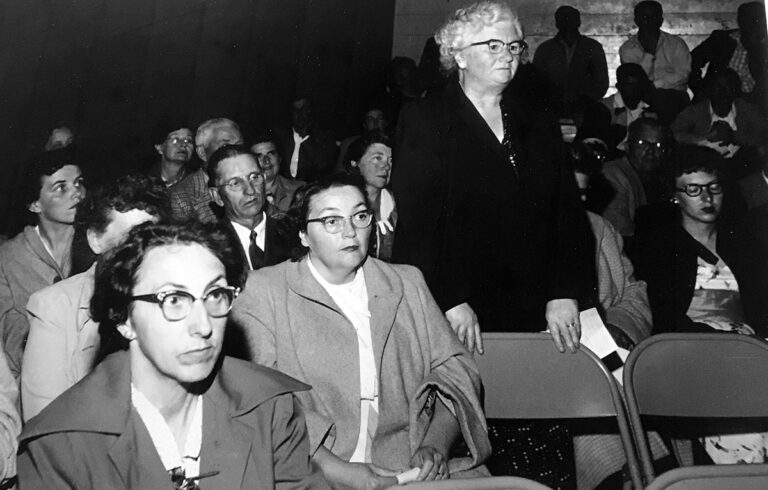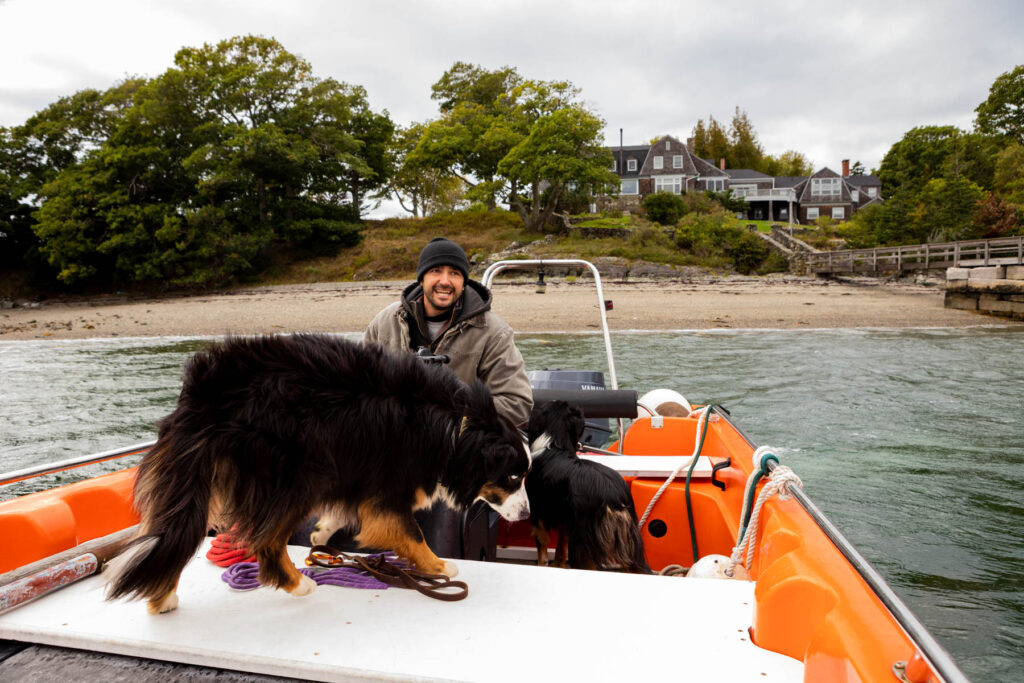
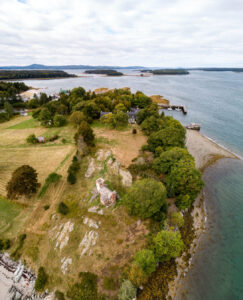
Off the southern end of Islesboro lies an island, spruce-clad and sprawling—not precisely 700 acres as its name would have you believe, but close enough. In 1903 a famous New York City artist, the creator of an iconic image of modern woman, discovered this northern domain and bought a piece of it—11-plus acres—with the proceeds from his illustrations. The place became a retreat, a kind of Penobscot Bay nevernever land where he and his family could spend their summers far from the maddening crowds and the heat of their home in New York City.
Around the turn of the 20th century, Charles Dana Gibson (1867-1944) was among the most famous illustrators in the world. His idealized modern woman, who came to be called the Gibson girl, brought him tremendous fame and fortune. At one point, Collier’s magazine paid him $50,000 to draw a double-page illustration every week for a year, an unheard-of sum at the time.
Gibson’s wife, the southern belle Irene Langhorne (1873- 1956), became his main muse and model after they married in 1895. She would be the Gibson girl—woman, really—that self-reliant, “poised and independent” female figure in stiff shirtwaist who turned the heads of the opposite sex. “For her,” observed one commentator, “men shaved off their mustaches because a Gibson Girl scorned such adornments.”
In truth, Gibson drew on many different women as models for his iconic figure. As J. M. Bulloch wrote in a tribute to the illustrator published in The Studio in 1896, “She is the daughter of the artist’s imagination, unique, copyright beyond the reach of all law: a child of art, pure and simple.”
In 1903 the Gibsons and their children, daughter Irene “Babs” Gibson and son Langhorne “Lang” Gibson, spent part of the summer at the Islesboro Inn in Dark Harbor. Delighted with their surroundings, they purchased the 700 Acre Island property. Nearly every year from 1904 till his death in 1944 the artist would spend part of the summer on the island.
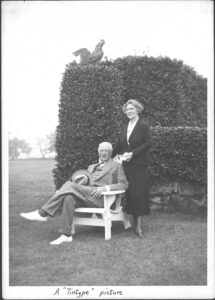
his wife Irene in 1937.
Gibson named the place “Indian Landing,” perhaps in acknowledgment of the first people to frequent the island, the Penobscots and Mi’kmaqs. Camped on the island in the summer, members of these tribes found sustenance by way of hunting and fishing. They also gathered berries and cut sweetgrass for baskets.
Maine State Historian Earle Shettleworth, Jr., provides an account of the construction of the Gibson house in The Summer Cottages of Islesboro 1890-1930 published by the Islesboro Historical Society in 1989. The centerpiece was a two-story 18-room Shingle Style house designed by New York architect Lewis C. Albro and built by W. H. Glove and Company of Rockland. A drone’s-eye view of the house today shows the additions made over the years to accommodate an expanding clan.
Shettleworth also describes the “picturesque outbuildings” the artist designed and built on the grounds of his seaside estate. Constructed from beach stones and brick, the structures include a playhouse for his granddaughter Nancy Post and a chapel/castle. About the latter, writing in Down East in 1982, Michael T. Kinnicutt noted how “passing boatmen doubtless would be surprised to learn that the miniature castle, housing a knight’s hall, a maiden’s chamber, and even dungeons, was bult in 1926 as an amusement for his grandchildren by Charles Dana Gibson.”
According to a plaque inside the castle, the structure was actually built by the artist in 1925 and was dedicated to his wife. And more than “an amusement,” the quasi-Norman-era structure served as a place for special occasions, including the marriage of the Gibsons’ children and the christening of grandchildren.
Other plaques commemorate various milestones and memorable family events, including this: “Kate Dana Goodale trained in these waters for her swim across the English Channel, on August 6, 1989, in 11 hours and 53 minutes.” Another panel honors Anna Goodale who won gold in women’s rowing in the 2008 Olympics (the Lewiston Sun Journal ran a story in August of that year with the heading “Maine rower has traits like ‘Gibson Girl’”).
Gibson built a small stone shed to house his wife’s gardening tools. “Although they have a tenant farmer who raises their vegetables and cares for the lawn,” wrote a visiting writer, “Mrs. Gibson herself takes care of the flowers.”
The artist also constructed a stone house as a camp for his son and daughter on nearby Ensign Island, which he purchased in 1910. A New York Times article dated July 29, 1930, recounted how he and Mrs. Gibson accompanied Democratic presidential hopeful John Davis and his wife on a picnic to that island.
The artist welcomed visitors, including the Rockland-born reporter Helen Shute (1878-1977) who wrote for several newspapers, including the Boston Herald, Bangor Daily News, and Republican Journal. When she asked Gibson if she could interview him at his island home in the summer of 1915, he replied, “I wouldn’t mind in the least being interviewed, but what can I say? I don’t do anything here but play with my boats.” The next morning, Gibson sent his launch to the mainland to pick up Shute. She subsequently reported on her genial visit during which the artist told her he had left his brains “in cold storage back in New York.”
In his later years Gibson would often retreat to a studio near the shore of 700 Acre Island to paint. The simple, spare, and tall space, built in the winter of 1904-1905, features a large bank of windows on one side to maximize the natural light that artists cherish.
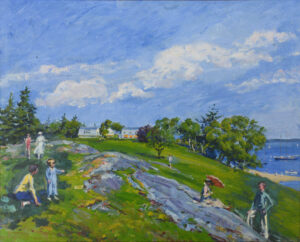
From early forays into painting—Gibson trained in Europe from 1905 to 1907—the illustrator became devoted to his oils, doing most of his work in Maine and en plein air. A family photograph shows the artist at his easel set up before the main island house, a grandchild in bathing cap and striped shirt looking on. Most of his paintings date from 1932 on, after he had retired from illustration and had begun spending more time on 700 Acre Island.
Gibson worked in a semi-impressionist style, not unlike what Frank Benson had practiced on North Haven in the early 1900s. Like Benson, he depicted a sun-filled island world where children played on lawns and women bore parasols to screen the sun. A number of paintings were devoted to his wife’s flower gardens and arrangements.
The brushwork is loose but disciplined, capturing a scene or a likeness with panache. One critic of the time described his subjects as “robustly articulate.” Another favorably compared some of his landscapes to van Gogh’s by virtue of the “vigor” in the paint-handling.
While a number of his oils capture island scenes—the dock, the grounds of his home—Gibson painted other subjects. An exhibition at Berry-Hill Gallery in New York City in October 1942 on the occasion of his 75th birthday featured paintings with titles like Hitchhiker—Maine, Landscape with Farmhouse at Camden, and Bridge at Oxford, Maine. Several canvases in the show offered views around Lincolnville from where Gibson embarked for Islesboro.
In addition to his impressionist landscapes, Gibson painted a number of portraits of family. In his 1997 documentary, Charles Dana Gibson: Portrait of an Illustrator, Josiah Emory, a great-grandson of the painter, included several first-hand—and humorous—accounts of grandchildren trying to avoid long sitting sessions with their grandfather.
Gibson also painted island residents, including several ship captains. In one, Capt. Phineas Leslie Rolerson (1856-1946) is portrayed seated in a rocking chair, newspaper in hand and pipe in mouth. Once hung in the Dark Harbor Yacht Club, this painting can be found at the Alice L. Pendleton Library. (Gibson designed the memorial flagpole in front of the library in honor of Islesboro residents who served overseas.)

These paintings of sea-going individuals provide a generational artistic connection to Gibson’s great-greatgrandson Abe Goodale. The 38-year-old painter uses a very different medium, watercolor, and paints Maine fishermen in action, on board their boats, pulling traps— not sitting in parlors. Yet both painters pay tribute to their subjects, finding character in their features and livelihoods.
Another connection can be made in their draftsmanship. Goodale takes as much care in his renderings of Maine lobstermen as Gibson did in his drawings of Gilded Age figures. If the end purpose is different—to pay tribute in one, to provide social commentary in the other—the skill might be said to be part of the family DNA.
For some time now, Goodale has set up shop in his illustrious artist-ancestor’s studio by the shore to paint his images of hard-working fishermen (see “On the Water,” Island Journal 2018). He is not the first descendant to occupy the space: his grandfather Robert Perkins Goodale and his uncle Peter Perkins Goodale, both accomplished painters, spent time in this studio.
Aside from some modern accoutrements—a computer and monitor, an electric kettle, a mini-fridge—the place is not that different from what it was like in Gibson’s day. An easel still holds court and paints are laid out. One contrast: where Gibson would have worn a suit and tie while painting, Goodale’s outfit is more casual.
And Goodale’s life story is quite different. Born in Montville in Waldo County, homeschooled on a sheep farm, he attended the University of Colorado at Boulder and the University of Utah before deciding to see the world. He traveled for many years, teaching wilderness training and studying different cultures across the U.S. and in Australia and South America.
As noted in a 2020 profile, Goodale came home to Maine in 2010 wishing to focus on making art that would connect him to where he grew up.
“I wanted to pay tribute to the fishermen that work so hard, rain or shine, day in and day out,” he said. His watercolors have since gained him acclaim and extensive gallery representation in Maine.
Goodale talks about having a show of his and Gibson’s work at some point. As he told writer Katy Kelleher last fall, he “wants to speak across time to his distant, famous ancestor, and in the process, he wants to spark something new.”
The last exhibition devoted to his great-great grandfather’s life and art took place at the Islesboro Historical Society in 2008-2010. “Charles Dana Gibson: An Artist of Maine Changes Social Manners and Images of America,” curated by Amanda Hobart, ran for three summers. In addition to illustrations and paintings, the show featured silhouette cutouts Gibson made as a child and images he created in support of the U.S. effort in World War I.
What would a Gibson-Goodale exhibition look like? Goodale has ideas but wants to develop the concept thoughtfully, over time. The prospect is exciting. While we wait, we can admire the art of these two artists who found inspiration on a grand Maine island.
The author thanks Abe Goodale, Josiah Emery, Carrie Thomas, and Melissa Olson for their help piecing together this article.
Carl and David Little’s The Art of Penobscot Bay is published by Islandport Press. Carl lives and writes on Mount Desert Island.

